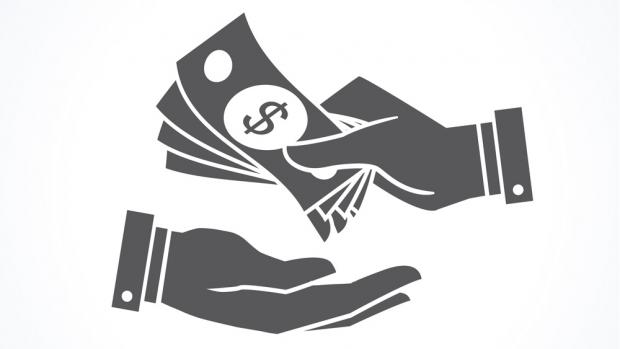Basic Income Is the Next Step
Basic income for all should be the next big advance in US government social policy. A guaranteed basic income will lower unemployment and poverty. It will raise the standard of living of the people who need it most and create a path toward eliminating needs-based government support—namely, unemployment insurance, welfare, and food stamps. It will not impact health-related programs.
Basic income will remove the stigma from government assistance and address the resentment many people feel toward its recipients.
What is basic income?
A basic income is an income unconditionally granted to all citizens on an individual basis, without means testing or a work requirement. It is a form of minimum income guarantee that differs from those that now exist in various countries in three important ways:
It is paid to individuals rather than households;
it is paid irrespective of any income from other sources;
it is paid without requiring the performance of any work or the willingness to accept a job if offered.
Basic income’s impact will be wide-ranging. Basic income encourages employment by removing barriers to low- or even moderate-paying jobs. Childcare and transportation costs, borne by the employee, often cost nearly as much as take-home pay, making work financially unrewarding. Basic income can help to cover those expenses while an individual works to lift their standard of living.
Basic income will provide a safety net for those looking to retrain. It will help reduce people’s anxiety about basic financial needs. It will help people have more economic opportunity. It may encourage personal independence and greater volunteerism. It will also simplify the distribution of public support payments, potentially eliminating billions of dollars in government overhead.
The universally recognized precursor of a basic income program is the Alaska Dividend. The Alaska Dividend comes closest to an established, universal basic income in the world today. The Alaska Dividend has paid dividends to all Alaska residents since 1982. The dividend for 2015 was about $2,070.
The Alaska Dividend is funded from the state’s share of oil revenue. The state was entitled to the revenue share when oil companies wanted to drill on public land. These monies were all new money, new income. The state negotiated a share of the profits and has used these funds, since invested, to pay the Alaska Dividend.
In a similar vein, Robert Reich, former secretary of labor, currently Chancellor’s Professor of Public Policy at UC Berkeley and most recently a Bernie Sanders supporter, has suggested that the US retain a portion of the ownership of all new patents issued. New inventions and new technology, he suggests, will eventually generate billions of dollars that could be used to fund basic income payments.
Others argue that initial funding for basic income can be found in existing government budgets. The Economist devoted its “Daily Chart” feature to universal basic income in June 2016. The chart showed how much each of the 33 countries of the Organization for Economic Cooperation and Development could afford to pay every citizen if it eliminated non-health transfer payments. In the United States, the chart says every citizen could receive $6,300. (Denmark had the highest immediate potential payment at $10,900; Mexico had the lowest at $900.)
The Economist concluded “[Basic income] could come sooner than you think…”
Right now the action on basic income is in Europe. Finland is implementing a basic income trial with 2,000 people currently receiving unemployment insurance. The $630 (€560) basic income will replace their unemployment insurance and will not be removed if they get a job.
Word is getting around in Europe about basic income. A Spring 2016 poll of 10,000 people showed 58 percent were familiar with basic income and 64 percent would vote in favor of it. But many oppose basic income. In the first national vote on basic income, a proposal was soundly defeated in Sweden when all major parties opposed it, as reported June 5, 2016, in the New York Times. That proposal would have provided $2,650 for every adult and $662 for every child. The proponents offered no plan to pay for it and those against it cited Sweden’s already low unemployment rate and prosperous economy.
In the US, basic income has supporters on both the left and the right. Robert Reich has written and spoken in favor of a basic income. Forbes magazine columnist Tim Worstall has written in favor of the idea in exchange for eliminating every other form of government assistance. Worstall’s view echoes the conservatives’ support for criminal justice reform, where the need for reform is driven by cost savings and has created a possible Congressional vote for progressive sentencing reform in order to attain these cost savings. Indeed, some conservative economists have advocated for a minimum income since the Nixon era.
Finally, the San Francisco Chronicle reported in June,2016 that Y Combinator, Silicon Valley’s renowned startup accelerator, is sponsoring a basic income trial with 100 families in Oakland, California:
Sam Altman, president of Y Combinator, said that he’s “fairly confident that at some point in the future…we’re going to see some version of [basic income] at a national scale.” A baseline of economic security, Altman says, could “give people the freedom to pursue further education or training, find or create a better job, and plan for the future.”
A basic income debate in this election year would have been bold and ambitious. Only a few new programs are being discussed in this year’s presidential election: expanding Medicare, lowering students’ college costs, and increasing regulation of financial institutions. These are all good projects, but they are incremental changes to existing systems.
It’s time we look for structural solutions to the country’s persistent challenges, no better illustrated than by Buffalo’s seemingly intractable poverty. It’s time for a discussion on basic income.

